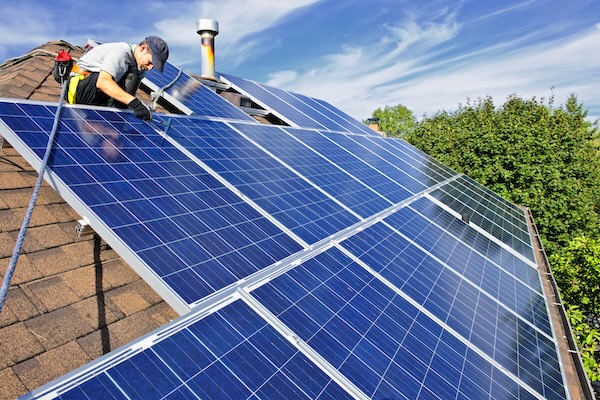If high energy bills and reducing your carbon footprint are important to you, it may be time to consider solar panel installation. Regardless of the size of your home, wasting energy is extremely common. It’s not just about turning the lights off when you leave a room or using electricity during off-peak hours—there are several ways we waste energy that most of us are unaware of. Avoiding energy waste and increasing efficiency, through solar power, conservation efforts, or both, can make a significant impact towards lowering energy bills and reducing our carbon footprint.
Read on to learn about some of the ways energy waste may be happening right under your own roof, and how to prevent what may be wasting the most electricity in your house.
1. Heating & Cooling
One of the easiest ways to detect energy waste is through rising costs. Has there been a spike in your bills with no rhyme or reason? Is your household’s energy use consistent, but the bills are not? Heating and cooling are the most common culprits of significant energy consumption. While weather is a factor, you may need to do an extensive review of other aspects impacting this, such as poor insulation, air leaks, and the times your HVAC system is running. Consider having an expert perform an energy audit of your home.
You may also want to consider getting a quote on residential solar installation to give you the ultimate in energy savings. Installing solar panels is the ultimate solution for reducing heating and cooling costs and lessening your home’s energy waste, especially in sunny states like California.
2. Old-School Appliances
Are you attached to that beat-up refrigerator you’ve had for more than a decade? Are you still using a rattling old front-loading washer and dryer? While it may seem like holding onto old appliances saves you money, these items actually become less energy efficient with time and usage. They typically consume much more energy than newer models, which translates to higher bills over the long term, in addition to the potential for repairs needed. Upgrading to energy-efficient appliances lowers consumption while reducing your carbon footprint and saving money on utility costs.
Consider investing in new appliances certified by ENERGY STAR for maximum efficiency and prioritizing a new refrigerator, washer and dryer, if possible. Modern washing machines use 25 percent less energy and significantly less water than machines from a decade ago, and new refrigerators typically feature high-efficiency compressors that consume much less energy. Combined with residential solar panels, you can maximize your energy savings even further.
3. Windows & Door Drafts
If certain parts of your home feel colder than others, this could mean your house has poorly sealed doors and windows that create drafts. The gaps these areas create allow cooler air to sneak inside and warm air to leak outside, requiring your heating system to work harder than ever. A study performed by the Department of Energy found that you can incur savings of between 5 and 30 percent simply by sealing drafts and replacing poor insulation. Plugging up small gaps is a simple DIY task, but you can also consult a professional handyman or energy auditor. You can also swap older windows out for energy-efficient models to maximize saving and efficiency.
4. Outdated Lighting
Inefficient light fixtures and bulbs are another energy waste for many in their homes. The heat created by traditional incandescent light bulbs wastes significant electricity; only around 2 percent of the emitted energy from an incandescent source is usable while the remaining 98 percent is wasted. Meanwhile, the light employed by LED bulbs uses 90 percent less energy and last 15 times longer. Switching to LED bulbs will make a notable difference in your energy consumption and carbon footprint.
5. Staying Plugged In
A common mistake many households make is to use what is often referred to as “vampire energy”, “standby power” and “phantom energy.” It’s not just during Halloween that you could encounter these mysterious forces! This energy use—which accounts for nearly 23 percent on average in U.S. households—is caused by electronic devices and gadgets that remain plugged in and are never turned off. These energy vampires include everything from chargers, phones, tablets, computers, gaming devices and televisions to coffeemakers, blenders, toasters, hair dryers and other beauty devices. While it may seem like each only costs a little amount, the energy these devices use adds up and creates a serious dent in your wallet over time. Unplug devices, turn off power strips, or install smart outlets whenever you can to save money and reduce energy waste.
Keep an eye out on these areas to see what you can do to mitigate your energy waste. Consider shifting household habits, replacing the energy bandits, and installing residential solar panels, especially if you live in a sunny state like California. Get a quote today!
